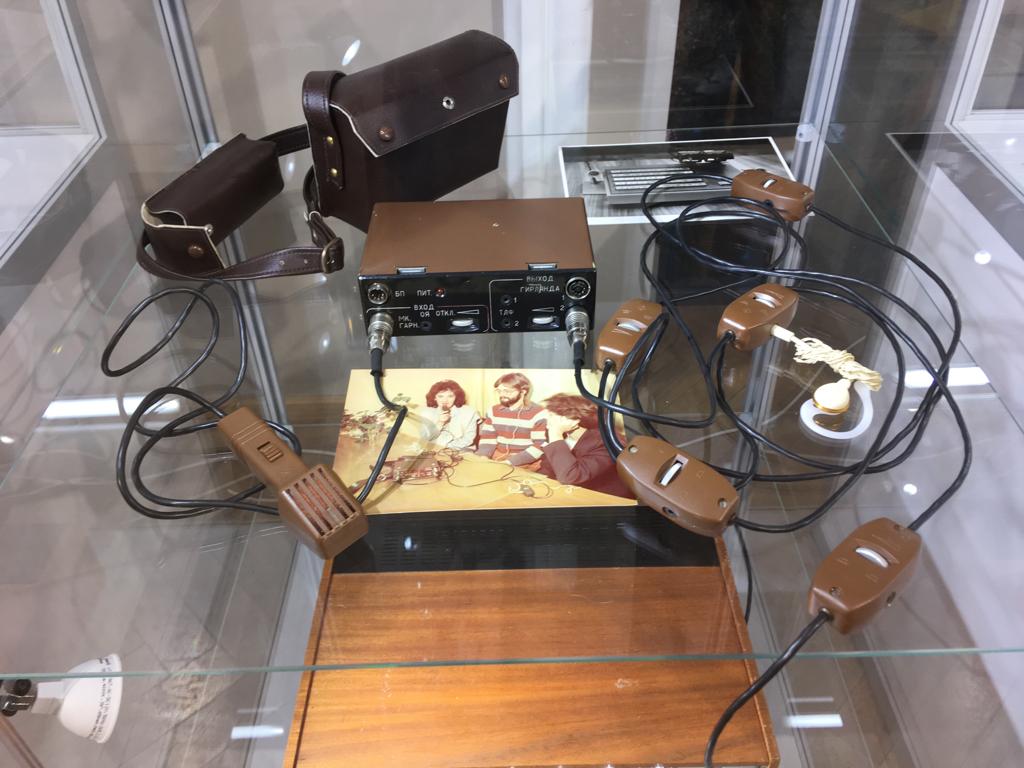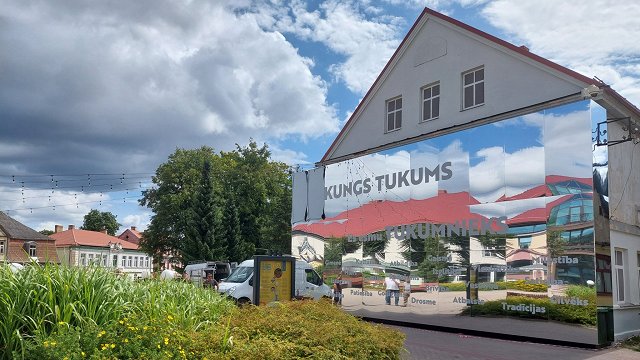Due to the small size of the VEF museum, which is located on the second floor of the VEF Cultural Palace, the exhibition “VEF Special Manufactures”, consisting of more than 6000 selected items, was arranged in the vestibule of the building.
“All these objects were manufactured with automated means of production using computers, or, as they called it, – micro-calculators,” said Māra Sudare, the VEF museum specialist, referring to the buttoned devices in the “VEF Micro” series placed at the center of the exhibition.
They were made in the early 80's, which is considered to be the factory's most lucrative period during the Soviet Era.
There are also photographs of computers manufactured by VEF and their inventors.
“Juris Červinskis, A. Krivčenkovs and Pēteris Videnieks – the men responsible for the “VEF Micro” series and the chief constructor-inventors of the Constructor Office of the VEF Technical Research Department. Their inventions made it possible to automate, for example, the gymnastics referee system at the 1980 Summer Olympics in Moscow. 123 “VEF Micro” computers were used for this,” said Māra Sudare.
The “micro-calculators” manufactured at VEF served to automatize many of the factory's in-house processes, especially those in the food combine “Vefietis”. The combine had automatic dishwashing and food serving lines, and it was there that, in the early 80's, the Soviet Union's first credit terminal was installed.
The exhibition also features an early synchronous translation tool used for conferences and many medical technologies like electronic neurostimulators, magnetic therapy apparatuses, and even a “psychotherapy device” through which speech and music was played to patients. Many devices have captions in English. The majority of these objects, however, never reached widespread use, said Māra Sudare.
“In the planned economy of those time, in which VEF was forced to operate, this was the manufacture of quite high innovation. It was produced in small quantities, and the production was supposed to expand with the discovery of new outlets. But, starting with the 90's, those outlets that VEF hoped for changed,” Sudare stressed.
In the second half of the 1990s, VEF was reorganized and the life of the company came to an end. Now, in anticipation of the 100th anniversary of the foundation of VEF, a book chronicling the history of the company has been released.
The book was the idea of the former VEF director Ivars Bražis, and its scientific editor – also a former member of VEF – is the current president of LMT Juris Binde.
“The book will chronicle the early years of VEF, when it still consisted of telegraph repair shops. There will also be an overview of the company's doings in the 30's and the Soviet era, as well as the development of all the major branches of the industry – telephone, radio, including the VEF infrastructure,” said Dace Kaprāne, the director of the VEF Museum.
The exhibition “VEF Special Manufactures” will run until October, and can be seen free of charge on the second floor of the VEF Cultural Palace.



























